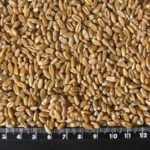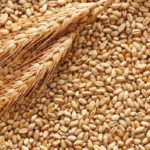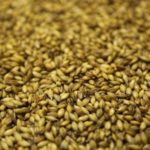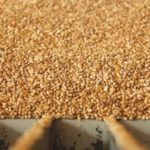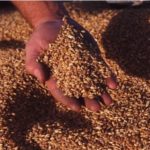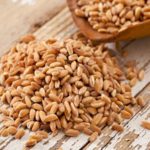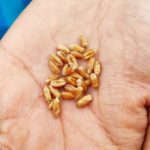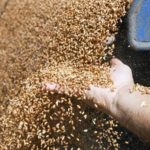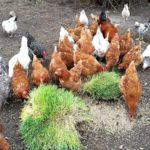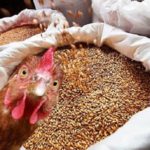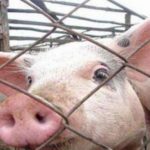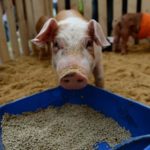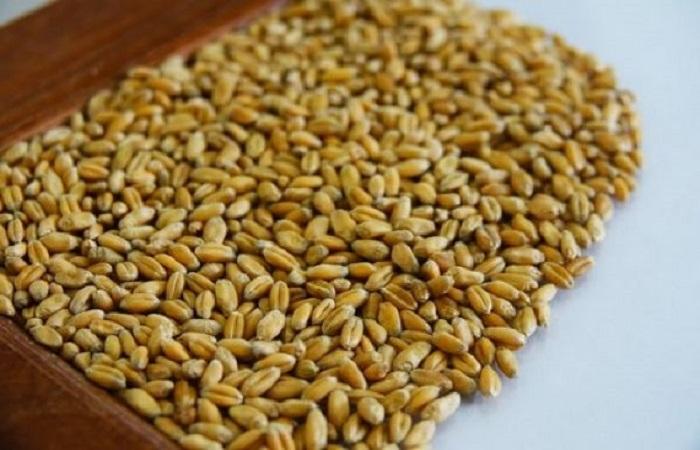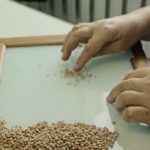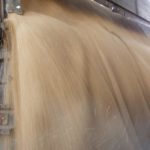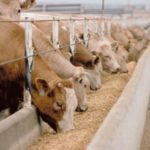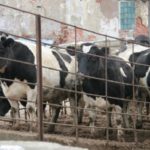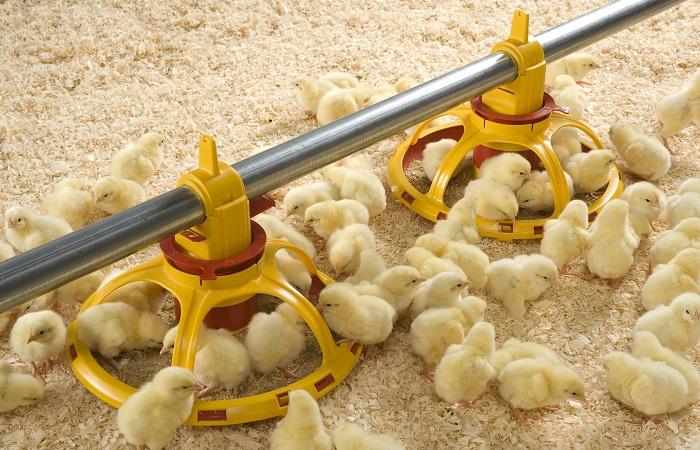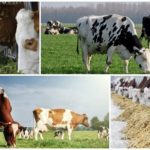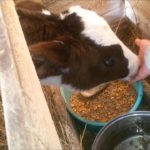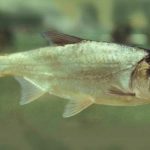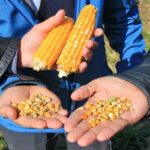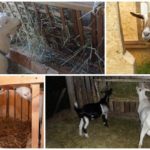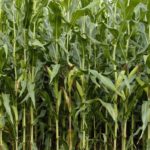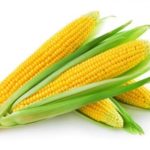All grain that is grown for subsequent sale is divided into several categories. One is intended for processing into flour, from which baked goods are subsequently baked. Other grains, of lower quality, are used to feed farm animals; it is commonly called feed grain. It is worth understanding how it differs from the usual one, and what requirements are imposed on wheat, which is used as livestock feed.
What is feed wheat
Cereal grain used to feed livestock is called feed. The name comes from the French word “fourrage”, which means “feed”. It is almost never specially grown; most often it is a product that does not meet certain standards and has not passed quality control for use in the food industry.
However, this does not mean that such grain is completely unsuitable for use - it has sufficient characteristics and nutritional value to be used as feed for farm animals. Before purchasing such food, you should find out what it looks like and its features.
Feed grains are not just wheat; Corn is considered the most nutritious and popular among livestock farmers. Barley and oats are also used as animal feed. Forage used for feeding:
- horses;
- cows;
- pigs;
- sheep;
- ducks and geese;
- rabbits;
- chickens
Feed grain is popular not only among livestock breeders who raise livestock for subsequent sale, but also among owners of small household plots.
Key Features
The main distinctive feature of cereal grains, called feed grain, is its low quality compared to that which is supplied to the food market and used after processing for human food. Also, forage is not used as seeds for sowing fields, since the sprouts are weak and often die.
Feed grain is suitable for use as feed for farm animals, but before purchasing you should pay attention to its quality.
The following features are characteristic of feed grain:
- a large percentage of damaged grains;
- high concentration of starch;
- a small amount of fats and carbohydrates;
- high energy value and the presence of essential vitamins.
However, it must be remembered that fodder refers not only to cereal grains, but also to other types of feed that are usually used to feed livestock. They are used both fresh and dried (in winter).
Forage demand
Since feed grain is the basis of the diet of farm animals, the demand for it is always at a high level. Moreover, during dry seasons or in certain regions where, due to climatic conditions, the harvest is small, the cost of forage, which belongs to the 5th or 6th class, is at the level of the 4th class, which is used in the food industry.
Product requirements
There are international requirements for feed grain - the absence of foreign odors, the integrity of the grains and the absence of dangerous infections. In this case, the type and variety can be any.
The list includes the following points:
- healthy appearance of grains and their characteristic color;
- absence of stains, traces of mold and rot, or musty odor on the grain;
- the percentage of litter does not exceed 5;
- percentage of mineral impurities - no more than 1;
- percentage of grain impurities - no more than 15;
- the percentage of specimens affected by the head fungus is no more than 10;
- the percentage of specimens showing traces of Fusarium infection is no more than 1;
- at least 87% dry grain per kilogram of product.
According to GOST definition, weeds include soil particles and pebbles, weed seeds, grain husks, particles of stems and leaves, grains and seeds of legumes and other crops.
As for grain impurities, it can be sprouted or unripe grain, as well as broken, wrinkled and deformed specimens.
When purchasing fodder that you plan to feed livestock with, be sure to take a handful of the product and smell it; the presence of a musty odor indicates that the forage is of poor quality and was stored in violation of the requirements. It is not recommended to purchase such a product, as it can cause livestock poisoning and death.
Classification
Feed grain is divided into three categories, depending on its quality the price of the product is set. First class products are considered the best - they contain a sufficient amount of proteins and vitamins, they are characterized by high energy value and contain a minimal amount of weeds and grain impurities. The cheapest grain is third class; it is rarely used in its pure form; as a rule, such fodder is added when preparing compound feed.
In addition, the classification of forage is carried out according to the following criteria:
- According to the growing season. There are winter and spring crops; as a rule, this parameter does not affect the quality of the product.Spring varieties are sown in April or May, and harvesting begins in August; depending on the region, these dates may vary slightly. Winter grain is sown in late August or early September, and harvested the following year in August.
- According to the structure of the endosperm. The grain can be hard or soft. The first option is especially popular among livestock breeders, since durum varieties have the following characteristics - they contain a high percentage of protein, hard grains are of the same small size, have strong stems, and have a glassy powdery consistency. This variety is used to feed cattle and pigs, and soft varieties are used to feed birds, rabbits and goats. Flour is also made from the soft version, however, baked goods made from it go stale very quickly.
There are 5 classes of products in total, the forage variety belongs to the 5th, but sometimes livestock farmers use the 4th class. The fifth class is characterized by a sufficient content of vitamins E and B, as well as a protein volume of 16%.
Differences from food grains
Feed grain differs from food grain in that it has a lower content of proteins and fiber, and, on the contrary, more carbohydrates. It is not used for food, but it is well suited for feeding farm animals. In addition to this difference, the cost of forage is significantly lower than grains intended for the food market, and it undergoes less stringent certification before sale.
How to use forage to feed livestock
Universal food, which is forage, must be used correctly so that it benefits animals and birds and does not harm their health.To do this, adhere to the following standards in the total share of feed:
- 35% for cattle;
- 40% for pigs and small animals;
- 30% for horses;
- from 20 to 40% for rabbits;
- up to 60% percent for birds.
Depending on the type of feed grain used, preparation is carried out before feeding it as feed:
- if the feed contains a large amount of cellulose, it is used exclusively for cattle and horses;
- the average percentage of cellulose allows the grain to be used for pigs and poultry;
- soft varieties are suitable for poultry, and hard varieties are suitable for large animals. Otherwise, the forage must be steamed to soften the shell; you can also pre-sprout the grains or grind them.
Forage is best absorbed if used as part of mixed feed; in this case, it is possible to compensate for the damage from a high percentage of starch by adding other components. Also, feed is pre-enriched with vitamin-mineral complexes, fats and fiber and other feed additives.
Advantages and disadvantages
Feed grain, like any feed intended for farm animals, has its advantages and disadvantages.
Among the advantages it is worth noting:
- Optimal composition suitable for feeding animals and birds. With the additional addition of phosphorus and lysine to the feed, it is possible to improve digestion and achieve harmonious development.
- Since the forage contains a high content of carbohydrates, this has a positive effect on the shelf life of the feed, prolonging it.
- The affordable price, which varies slightly in different regions, allows the forage to be used both for feeding animals on farms and in private farms.
The disadvantages include:
- Low fiber and protein content with an increased concentration of carbohydrates can lead to obesity in livestock.
- A high percentage of starch causes gastrointestinal disorders in animals.
- The low content of sugars and fats sometimes provokes indigestion and poor absorption of feed.
Terms and conditions of storage
Store the fodder after drying it in clean and dry rooms, ensuring protection from rodents. Experienced livestock breeders recommend using plastic bags for storage; they do not allow moisture and light to pass through.
Selection rules
Before purchasing fodder, you should pay attention to the color, smell and integrity of the product. If you plan to purchase a large batch, it is better to entrust the analysis to a special laboratory.

